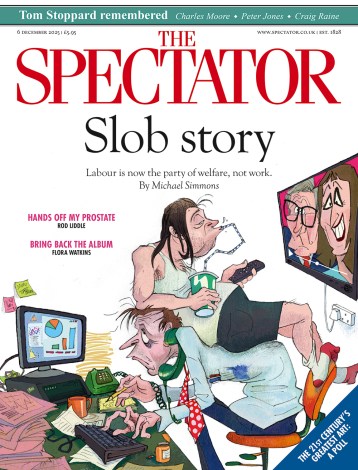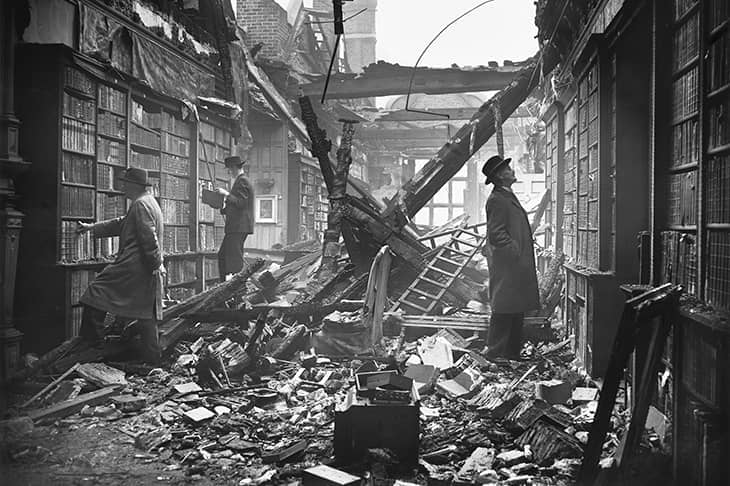I write this in a garret a few doors down from the public library in Muswell Hill, north London. It is a nice irony that a century and a half ago, on the site where the free-to-join municipal library now stands, was a villa owned by one Charles Edward Mudie. In the mid-19th century, Mudie had amassed a fortune by establishing a hugely successful lending library where subscribers could either pay a guinea a year to borrow as many books as they could read, or take the pay-as-you-go option of a shilling a book.
For purely commercial reasons, Mudie was a staunch supporter of novels that were long enough (c.200,000 words) that they needed to be broken up into three separate volumes, and his influence was such that publishers would insist that writers bulk out their narratives accordingly. As the authors of The Library put it: ‘If we ever wonder why so many 19th-century novels lose themselves in the middle passage with a convoluted love story between two marginal characters, we should blame Charles Edward Mudie.’
I cite the example of Mudie and the Victorian novel because it illustrates the key point that runs through this excellent history: that libraries are much more than passive repositories of knowledge. Rather, they have shaped both how we read and what we read, not to mention who gets to read. Another example: there is a well-known photograph, reproduced above, of the bombed-out library of Holland House in Kensington, hit during the Blitz, with readers in hats and macs still casually browsing the shelves. The image was circulated as propaganda: the stoicism of the home front, the persistence of culture. The library, and our relationship to it, can inspire national pride.
Andrew Pettegree and Arthur der Weduwen have packed an awful lot in here. Their rigorous but riveting history begins with the vast library at Alexandria. No, not that one. This is the new UNESCO-backed one, where a $21m donation from Saddam Hussein secured Iraq pride of place at the 2002 opening ceremonies. The modern Bibliotheca Alexandrina has been beset with scandal, and the generosity of the international libraries who donated books to its collection hasn’t always stood up to scrutiny (a 1974 Guinness Book of Records anyone?) There is hubris in trying to recreate something whose time has passed, and Pettegree and der Weduwen are not misty-eyed about any particular vision of the library. It is an idea, after all, that has shifted in shape for the last two and a half millennia.
In the 14th and 15th centuries, the humanist renaissance was driven by the rediscovery of classical learning. Pre-Christian writers — Lucretius, Cicero, Quintilian, Vitruvius — had lain forgotten for many centuries until bookhunters such as Poggio Bracciolini descended like tomb raiders on the monasteries of Switzerland and Swabia. Here they would affect horror, bursting into tears at the conditions of the manuscripts ‘kept like captives’ (Bracciolini’s words) by ‘abbots and monks totally devoid of any knowledge of literature’. Swiping them, for a song, in a self-righteous huff, they would carry them back to their own collections, making a name for themselves as liberators of the newest old knowledge.
Pettegree and der Weduwen are wry on the professional posturing going on here. The difference between the monastic and the humanist library was not only about the conditions in which the books were kept; it was about private versus public too, about ownership as performance, the library as a kind of self-fashioning.
When Thomas Bodley, at the turn of the 17th century, envisioned a new library for Oxford University (the previous collection had been carried off or burnt in the Reformation), he stipulated that it should not contain ‘idle books and riffe raffes’. He meant works in English. Thankfully for the students who work there now, a library can change — not just its acquisitions policies, but even the sense of what it can offer besides books.
Returning to the council-run library at the end of my street, as well as lending books, it provides wifi and computers that are free to use. I can attend surgeries with my local councillors there; and when the neighbourhood was subject to surge testing for the gamma variant this spring, this was co-ordinated from the library.
A far cry from Mudie’s shilling-a-pop lending library, then. But how will things look in the future? Already, in some places, the public library has been re-envisioned as the shelfless information hub where laptop-tapping digital natives connect seamlessly to internet archives. It is a vision that squeezes out the young parent for whom the children’s library is an uncommercialised sanctuary, and the pensioner devouring novels by the dozen. If it is not the future we want, Pettegree and der Weduwen have stern words: ‘If there is one lesson from the centuries-long story of the library, it is that libraries only last as long as people find them useful’. Use it or lose it then. I sincerely hope it’s the former.






Comments